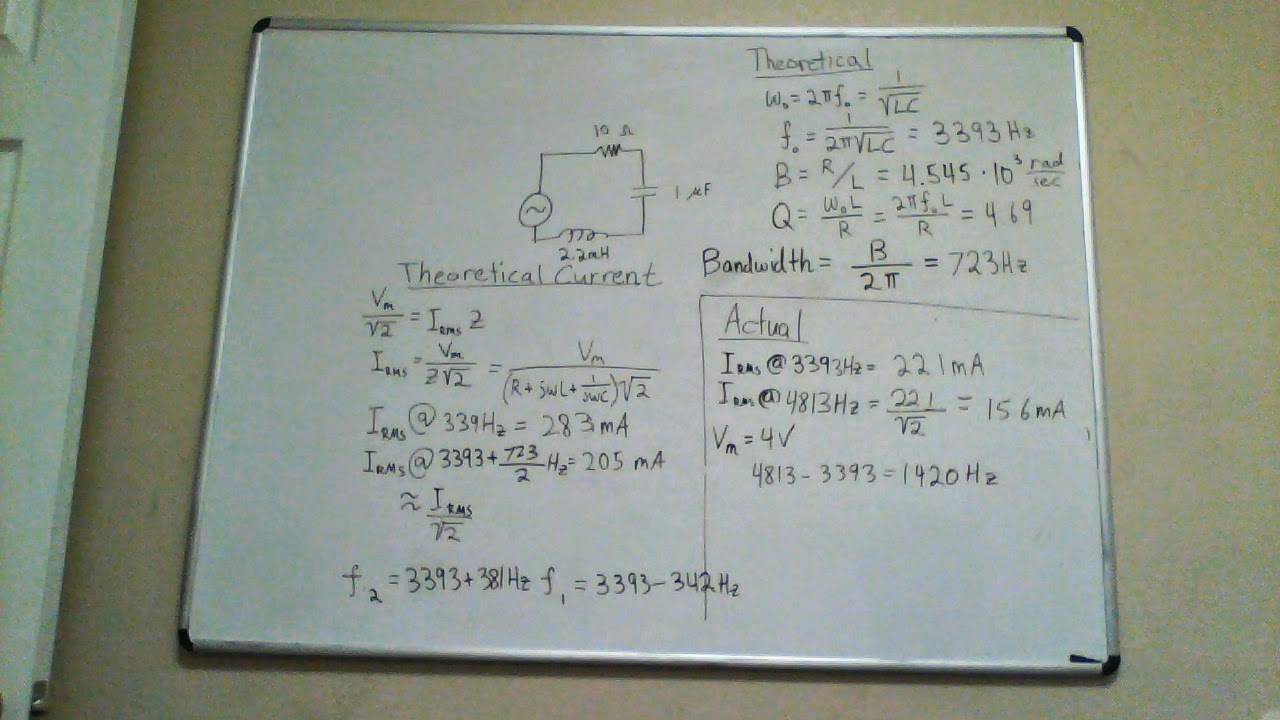This lab observes the phenomenon of how circuits can be modified to resonate within a desired frequency and bandwidth. We start by solving for theoretical values on a circuit resembling a tuner for a car radio, (a simple RLC circuit).
- Solve for theoretical bandwidth.
- Obtain actual bandwidth from experimentation.
- Solve for theoretical bandwidth.
- Obtain actual bandwidth from experimentation.
Once we set up the series RLC circuit connected to a signal generator, we performed theoretical calculations and then solved for the actual bandwidth.
The RLC circuit with a 10 Ohm Resistor and a 1 microFarad Capacitor.
The resonant frequency was found to be large due to smaller values in capacitance and inductance. The Bandwidth was found to be 723 Hz theoretically and the bandwith threshold between 3393 - 342 Hz and 3393 + 381 Hz.
(1423-723)/723 * 100 = 96.818% Error.
The RLC circuit with a 100 Ohm Resistor and a 100 microFarad Capacitor.
This circuit's resonant frequency was found to be lesser than the previous circuit. The bandwidth was found to be 7230 Hz theoretically and the bandwidth threshold between 339 - 323 Hz, 339 + 6910 Hz.
(8070 - 7230)/7230 * 100 = 11.61% Error
We hooked up an Ammeter to measure the passing current and increased the frequency until the current decreased by 1/root2, which was the value of current for half power.
The actual value were off by a significant amount, which was probably due to non-ideal resistance of the capacitor and the inductor factoring into the real value of power. The first RLC circuit was affected heavily due to it originally having a small value of resistance.
Conclusion:
This lab gives us a decent understanding of how frequency-dependent circuits may be modified to obtain measurements of bandwidth.




No comments:
Post a Comment